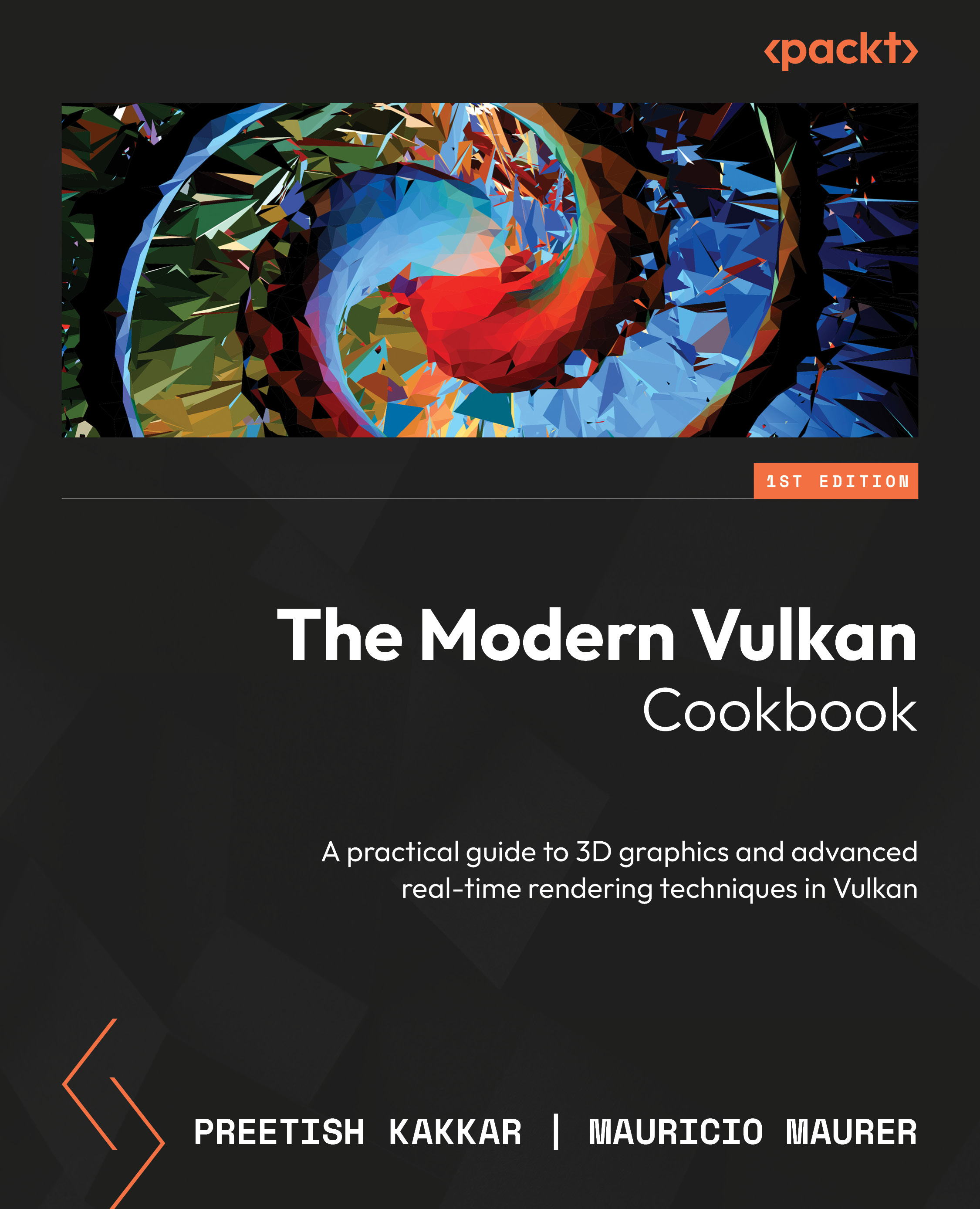Technical requirements
To successfully run the code featured in this and rest of chapters, your system must meet the following requirements:
A Windows computer equipped with a GPU that supports Vulkan 1.3. We recommend having a machine with at least 16 GB of RAM and a modern graphics card. The code for various chapters was tested with GTX 1080, GTX 1060, RTX 3050, and RTX 4060. Please note that Chapter 7, Ray Tracing and Hybrid Rendering, requires RTX 3050/4060 series card since it demonstrates use of ray tracing.
To get started, follow these steps:
- Download and Install Vulkan SDK 1.3.268: Visit the LunarG website at https://sdk.lunarg.com/sdk/download/1.3.268.0/windows/VulkanSDK-1.3.268.0-Installer.exe and download the Vulkan SDK 1.3.268 installer. Run the installer to complete the installation process.
- Install Python 3.12: Download the latest version of Python 3.12 from the official Python website and follow the installation instructions provided.
- Clone the...


























































